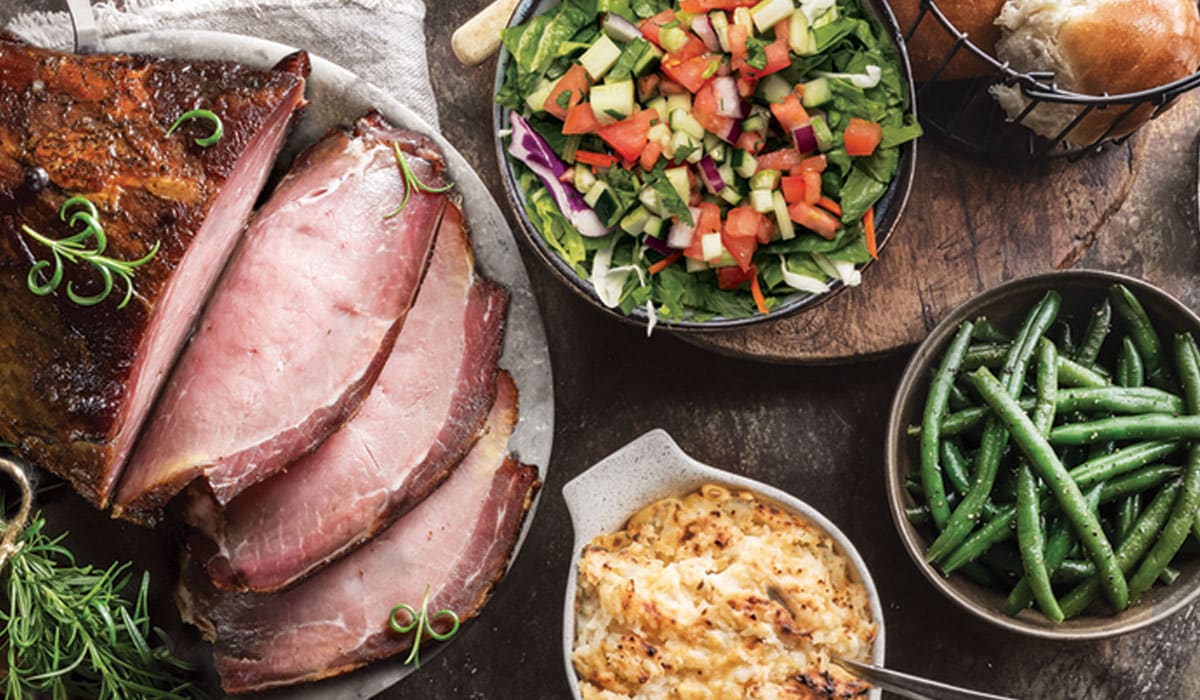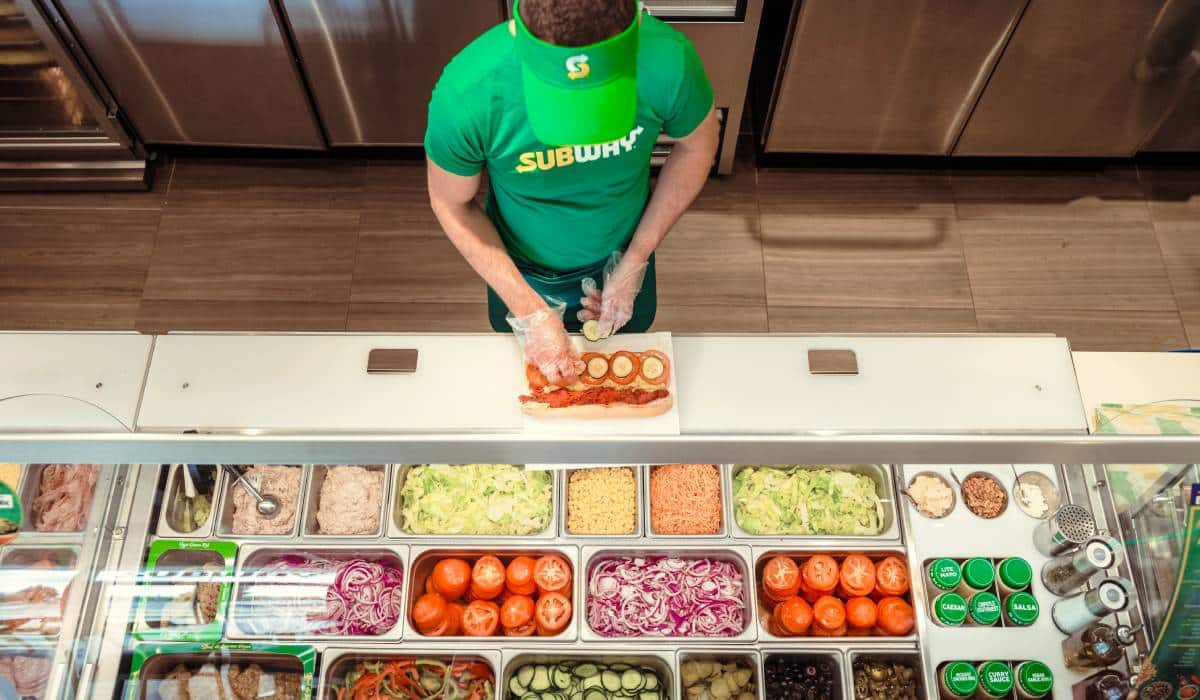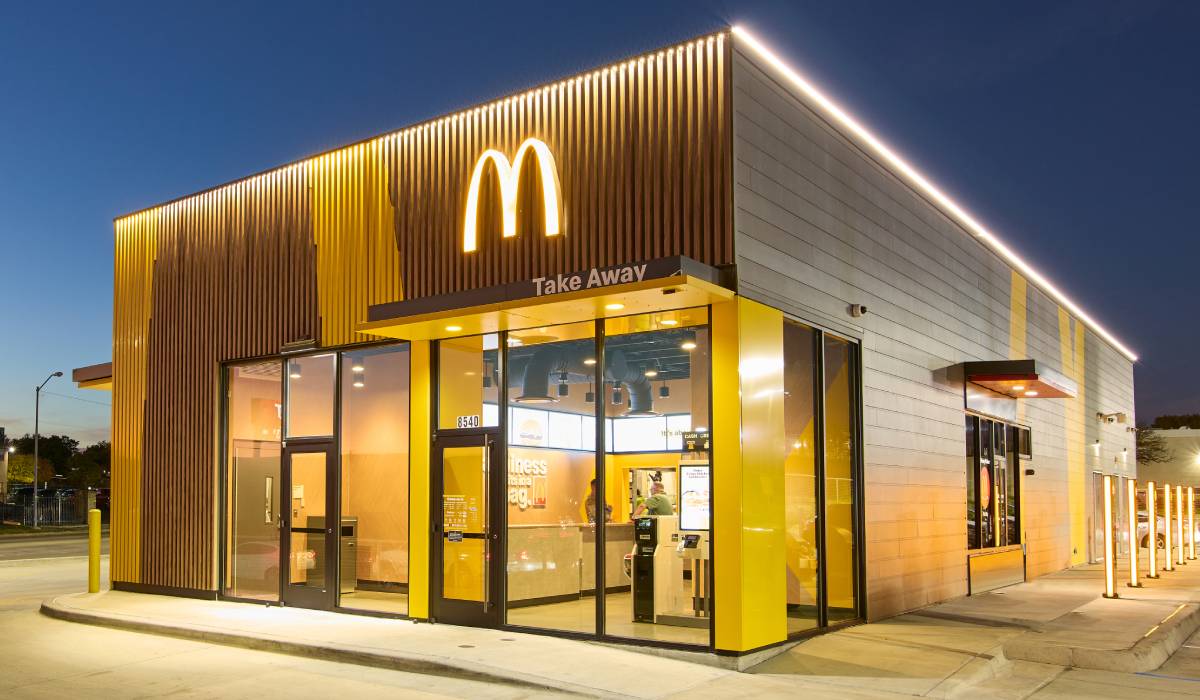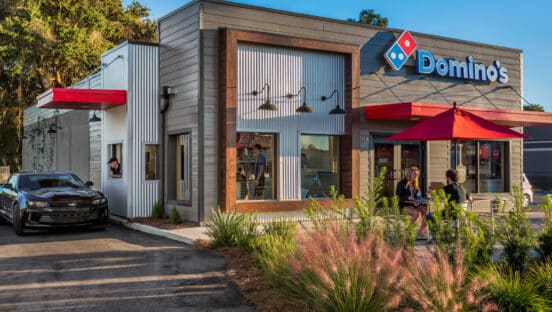Since Subway began franchising nearly 50 years ago, the company has grown with a singular focus on expansion, says Steve Rafferty, senior vice president of development.
And for decades, the strategy worked. Subway not only became the largest restaurant chain in the U.S., but the entire world. Rafferty, who joined the brand in February 2021 after long stints at Yum! Brands, Burger King, and Dunkin’ Brands, says the sandwich giant is quite proud of that history and legacy, but the company also recognizes it’s time to evolve.
Over the years, Subway became too large, and now, the restaurant is going through a major rationalization. The 100 percent franchised concept finished 2021 with 21,147 U.S. outlets, a net decrease of 3,650 units versus 2019—that number alone would be among the top 15 biggest fast-food chains in America. McDonald’s recently surpassed Subway as the most ubiquitous restaurant in the world, but Subway still holds the top spot in the U.S. by more than 5,500 stores.
To optimize its presence in the U.S., Subway is ridding itself of a development-first mindset and opting for an experience-oriented approach. To Rafferty, that means focusing on operational excellence and ensuring locations are in the right image, location, and format to best meet guests’ needs.
“It’s all about delivering Subway in a way that our guests really want to use us and taking it away from just that sort of singular focus on development,” Rafferty says.
READ MORE:
Ranking the biggest sandwich chains in the U.S. last year
A look back at where Subway’s revamp began
Subway was built upon commitment and investment from thousands of small franchisees who own one or two restaurants. Rafferty says those operators will always be part of the brand, but as the chain optimizes itself, it feels there’s a better opportunity to team up with multi-unit partners.
The development executive believes that’s the true unlock for Subway’s next level of growth, and it’s a two-pronged strategy. Among the existing base, there are stories of franchisees expanding from one or two stores to 10–20 or even 50 in some cases, Rafferty says. Subway is pushing for more of those occurrences, with young, entrepreneurial franchisees acquiring more from those operators approaching the sunset of their careers.
At the same time, Subway is seeking greater engagement from new franchisees. For a long time, the brand prohibited operators from owning any other concept. Rafferty can’t speak to why the company reached that decision decades ago, but he does know exactly why it’s time to move on. The industry veteran notes many in Subway’s leadership team have worked at other restaurants and have experienced success, and one of the most common drivers of those triumphs is diverse perspectives from operators, including demonstrated expertise in growing a brand and building in a particular market.
“I like to think that they’ve sort of seen the movie, and they wrote the book in some cases on how to scale a brand in a particular market,” Rafferty says. “They bring that operating expertise, building great teams to deliver a great guest experience, they bring development expertise. And development can be very different market to market, but if we’ve got somebody who’s been successful scaling a brand like ours in ‘Anytown, USA,’ we can have some confidence that they’re going to be able to do the same with our brand.”
Upcoming development is no longer about the numbers, Rafferty explains. It’s about improving what Subway already has. Meaning, the most likely way for large multi-unit operators to enter the business is through acquisition and not building a certain number of restaurants. After purchased units are appropriately remodeled or relocated to better trade areas and performing at a higher level, then there can be talks about expanding the portfolio through new unit development.
“What we are doing is bringing all the great tools that are available to us today through market planning and data science to identify what is the best opportunity in a particular market or in a particular trade area when you’re as established as we are,” Rafferty says. “We’ve got to really think hard about relocating some assets where the trade area you may have moved on a little bit. We use the experience of our teams and our franchisees—I call that sort of the art of it—but we have science to it. So it’s a mix of art and science.”
[image source_ID=”132897″]
“It reminds people about Subway and it brings guests back,” Rafferty says. “Maybe they haven’t visited us for a while and it reminds them of what they love about Subway. And it creates some repeat business that our franchisees are thrilled to see.”
Rafferty feels Subway’s franchise offering is one of the more flexible deals in the quick-service segment. It’s a fairly simple operation since no fryers, grills, or broilers are involved, and that allows the chain to fit into all types of traditional and nontraditional venues, like airports, hospitals, gas stations, travel centers, and more. In terms of drive-thru—an order channel that skyrocketed in popularity during the pandemic—Rafferty says there’s ample opportunity to grow from the 2,000 currently in the system because of the food’s portability.
Recently, a growing number of quick-service concepts have ventured into off-premises-only restaurants in traditional locations. Some (i.e. Wingstop and Panera) have taken it a step further and debuted digital-only units in which there are no cashiers and customers must order via the website/app or through a third-party delivery platform.
Subway is aware of those trends and impressed by them, but the chain isn’t ready for that type of prototype just yet.
“We’ll be testing some of that, but it’s not something that we see as the largest opportunity in front of us,” Rafferty says. “It’s a big one, but we think we have an opportunity to get better and better at drive-thru in a traditional way perhaps first as we go see what we can learn by testing different formats, potentially, including the digital-only pickup model.”
In nontraditional spaces, Subway is in the early innings of testing unattended retail solutions. In 2021, it began piloting grab-and-go sandwiches inside different channels like casinos, gas stations, and convenience stores. That experiment has grown to 400 locations. Subway is also tinkering with contactless and cashless smart fridges filled with freshly made sandwiches, an idea prompted by franchisees.
“The partner says, ‘Hey, how can we maximize our sales even in the hours when we’re not open?’” Rafferty says. “We had some success with limited trial of this in international markets, in some Asian markets specifically. But closer to home, as I said, travel plaza partners have really latched on to this and it’s really meeting the needs of our customers who are our franchisees who in turn want to meet the needs of our consumers.”
Development is one of several ways leadership is trying to build a better Subway, Rafferty notes. In July 2021, the brand rolled out the largest menu launch in company history—a major first step in its multi-year transformational journey.
More than 20 upgrades—11 new and improved ingredients, six new or returning sandwiches, and four revamped signature sandwiches—hit outlets nationwide. The launch was supported with ad campaigns featuring some of the highest-profile sports stars, including Serena Williams, Steph Curry, Tom Brady, and Charles Barkley. Additionally, Subway upgraded its app to reduce friction and partnered with DoorDash to launch delivery through its app and website.
The menu helped Subway beat 2021 sales projections by almost $1.4 billion and reach its highest AUV since 2014. About 75 percent of the U.S. system—more than 15,000 locations—experienced a 7.5 percent increase in same-store sales versus 2019. In Q1 2022, the same number of restaurants witnessed comps grow 8.2 percent compared to 2019.

The rollout and subsequent TV ads placed Subway back into the consideration set of some multi-unit candidates because it showcased how committed the brand is to becoming a better version of itself. For existing franchisees who were hesitant to make further investments coming out of the pandemic, sales results encouraged more to pursue remodels.
This July, Subway unveiled another slate of menu changes, called “Subway Series.” It’s a lineup of 12 new signature sandwiches, ordered by food category and number, i.e. (Cheesesteaks: No. 1 The Philly, No. 2 The Outlaw; Chicken: No. 7 The MexiCali, No. 8 The Great Garlic). Instead of picking ingredients and toppings, customers are able to say a sandwich number or name and whether they want a half-foot or foot-long sandwich. Subway said the latest release was the result of six decades worth of culinary expertise and experimentation of more than 100 recipes.
“It reminds people about Subway and it brings guests back,” Rafferty says. “Maybe they haven’t visited us for a while and it reminds them of what they love about Subway. And it creates some repeat business that our franchisees are thrilled to see.”
About 9,000 stores have committed to Subway’s “Fresh Forward” design, which includes LED lighting, new floor coverings, containers, tables, colors, and chairs. That’s thanks in part to a grant program in which the chain promises to contribute and invest alongside franchisees. As of June, 4,500 of those restaurants completed the remodel. The remaining locations have ordered and paid for equipment and are just waiting to receive everything.
“We had one sandwich artist, when she walked into a remodeled Subway, she said, ‘Wow, it looks like an Apple store,’” Rafferty says. “That’s a bit of an overstatement from my perspective, but I sort of get what she’s talking about, right? It is a very different look than what our guests might remember us as having been in their experience. It’s very bright. It’s very appealing. It’s very clean. It just looks modern, and we think a great expression of what the Subway brand really can be.”
Every week, members of the leadership team meet with franchisees to learn about what’s working and what needs to be done differently, whether that’s operational setup behind the counter or how certain products impact sandwich artists. Rafferty and his team look into the future knowing the best ideas will come from the field.
On a broader scale, Subway distributed a global franchisee satisfaction survey in 2020—the first one it had done in a long time, if not ever, Rafferty says. The information established a baseline for the brand. The chain received results from its second survey in April, and found franchisees rated it higher in all key measures compared to two years ago, including leadership, support, core values, and having a clear vision for the brand.
“We know that we’ve got a long way to go to continue meeting the needs of our franchisees and in turn our guests, but we’re pleased with the sort of interim checkpoint that says, you know what, we’re headed in the right direction and our franchisees are telling us that. That’s really important to us,” Rafferty says.









